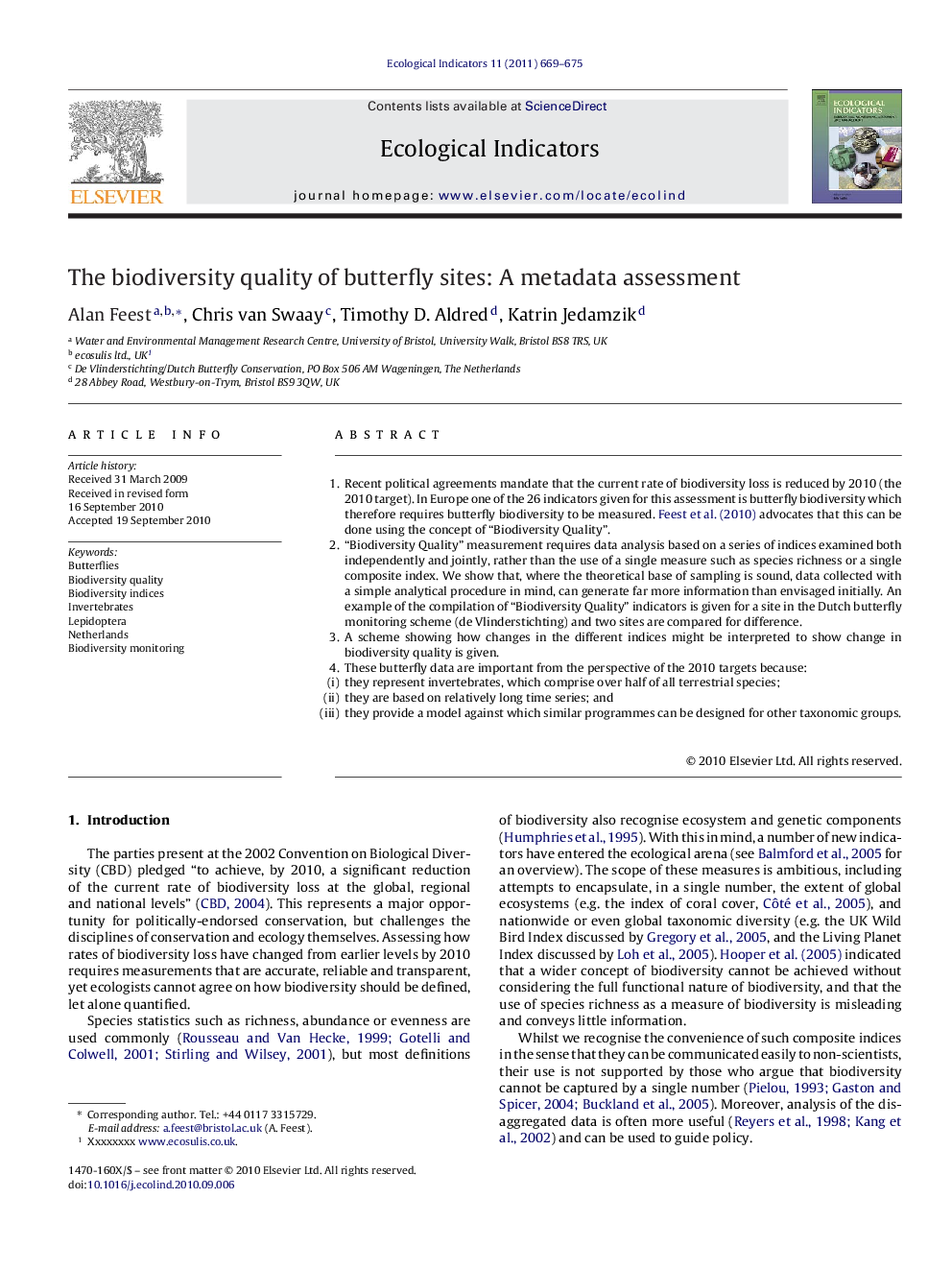| Article ID | Journal | Published Year | Pages | File Type |
|---|---|---|---|---|
| 4374145 | Ecological Indicators | 2011 | 7 Pages |
Abstract
1.Recent political agreements mandate that the current rate of biodiversity loss is reduced by 2010 (the 2010 target). In Europe one of the 26 indicators given for this assessment is butterfly biodiversity which therefore requires butterfly biodiversity to be measured. Feest et al. (2010) advocates that this can be done using the concept of “Biodiversity Quality”.2.“Biodiversity Quality” measurement requires data analysis based on a series of indices examined both independently and jointly, rather than the use of a single measure such as species richness or a single composite index. We show that, where the theoretical base of sampling is sound, data collected with a simple analytical procedure in mind, can generate far more information than envisaged initially. An example of the compilation of “Biodiversity Quality” indicators is given for a site in the Dutch butterfly monitoring scheme (de Vlinderstichting) and two sites are compared for difference.3.A scheme showing how changes in the different indices might be interpreted to show change in biodiversity quality is given.4.These butterfly data are important from the perspective of the 2010 targets because:(i)they represent invertebrates, which comprise over half of all terrestrial species;(ii)they are based on relatively long time series; and(iii)they provide a model against which similar programmes can be designed for other taxonomic groups.
Related Topics
Life Sciences
Agricultural and Biological Sciences
Ecology, Evolution, Behavior and Systematics
Authors
Alan Feest, Chris van Swaay, Timothy D. Aldred, Katrin Jedamzik,
